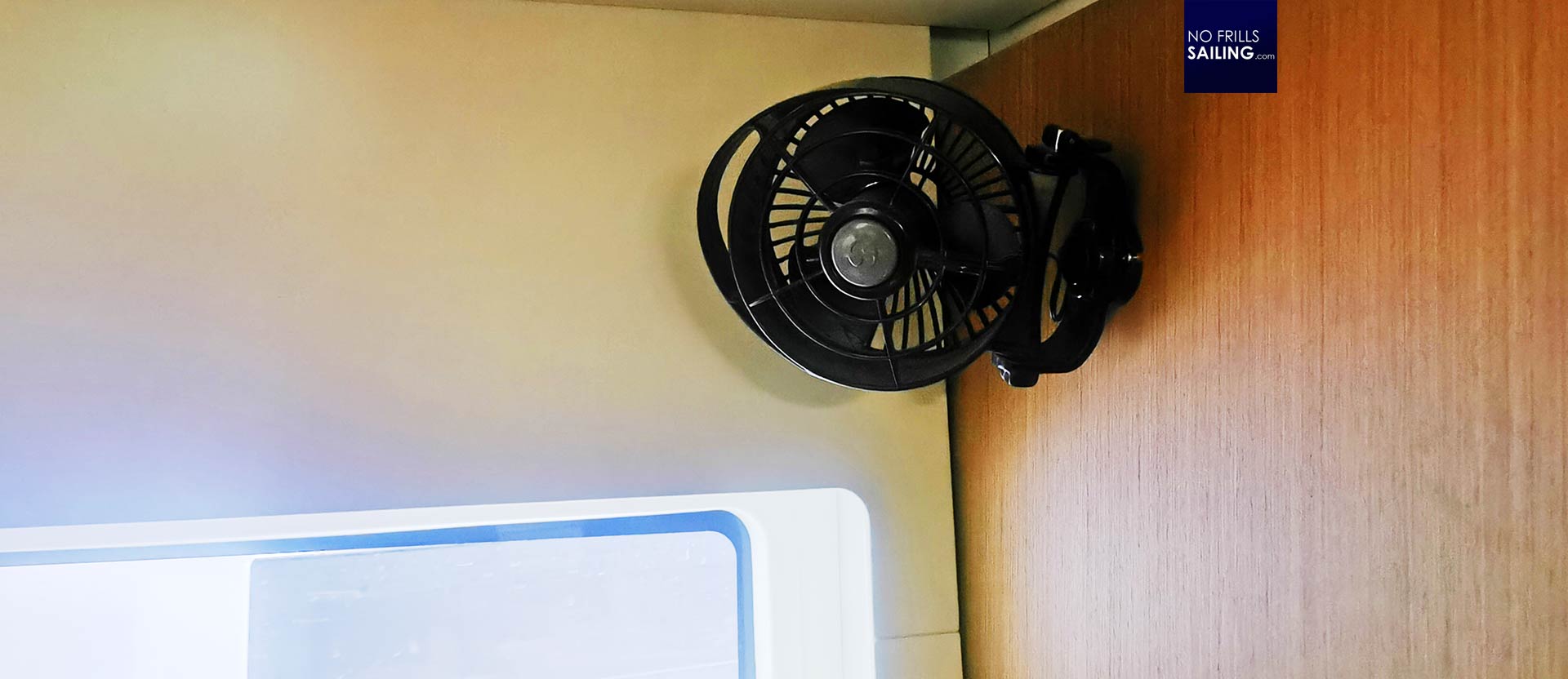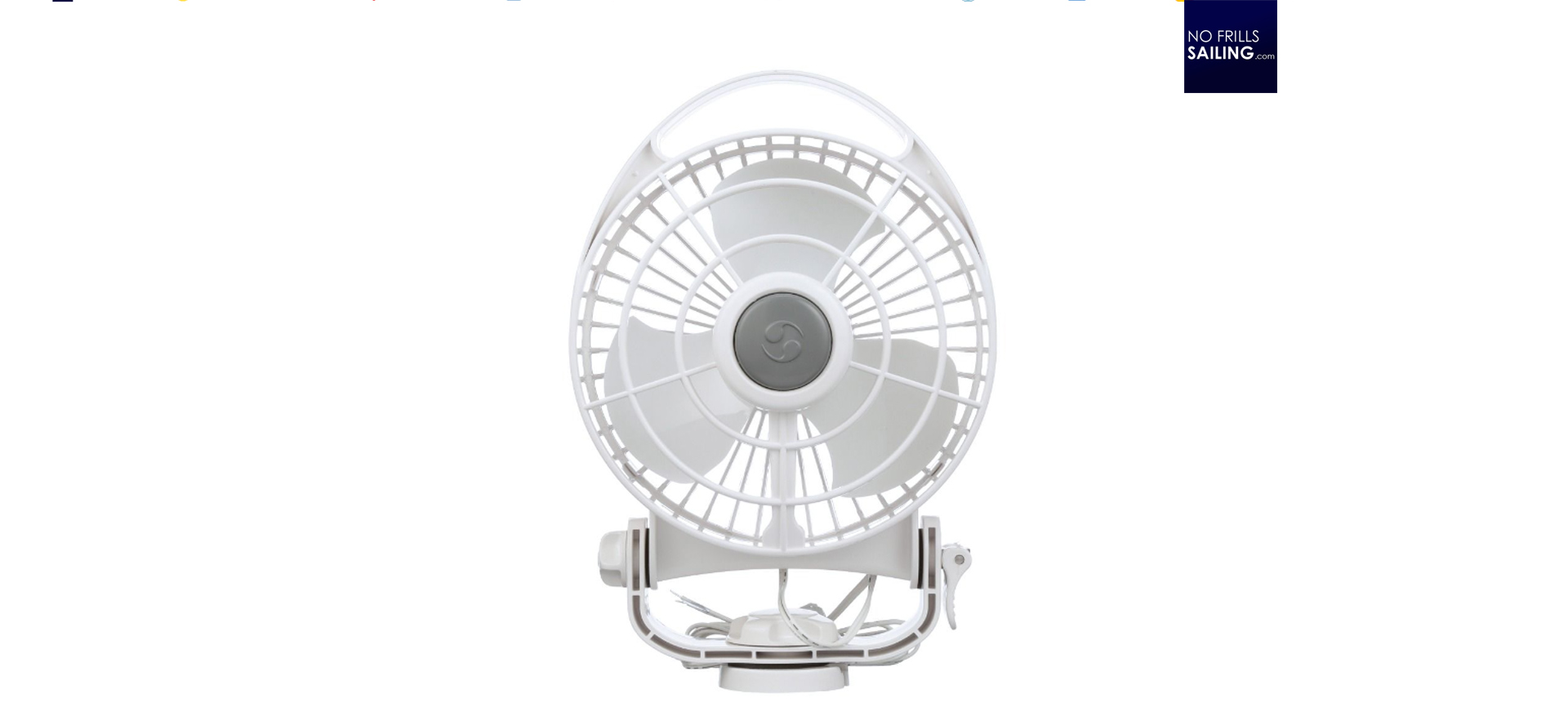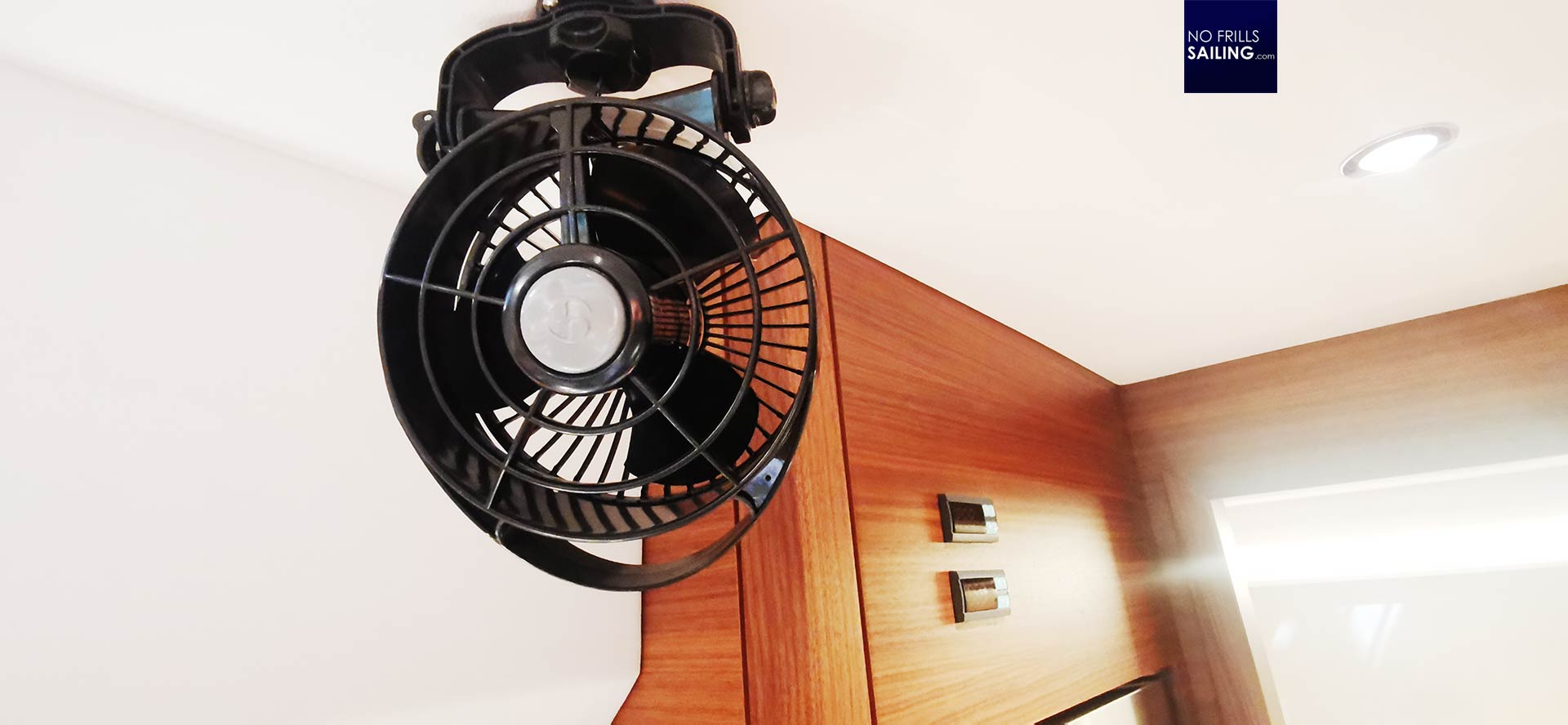This is another nice little story. Frequently, when roaming the boat shows but also when talking to clients and customers, the topic of conversation is drawn towards a certain topic, or I shall rather say, a specific little detail of a boat´s equipment: The fan. Have you noticed it yourself? Those little plastic ventilators, mostly white or black, put in the salons and cabins of sailboats. Hidden in the farthest corners of the cabins, they are a source of fresh relief and deafening annoyance.

I became aware of this details recently during Boot Duesseldorf boat show when I visited my beloved dream yacht, the Oyster. It´s a multi-million Euro luxury dream boat and even here, these small plastic fans are installed in the cabins. I ask myself: What is it all about those fans? Why the heck are these to be found on literally every yacht, used by every brand on the market? As I´ve had a little spare time lately, I did some research …
Cheap plastic equipment?
First of all, they may appear rickety and shaky, loud and noisy, but that´s the way a fan works. There is no such thing as a ventilator that is quiet like a whisper. Remember a helicopter or a turbo-prop airplane? The prop-blades create spirals of highly compressed air which, hitting our ears, sound like drumbeats. Inevitable. The “ricketness” of the fan is on purpose: Like an airplane wing that flexes, the fan can absorb the stresses best like this. So, it´s not “cheap” by any means.

The more I keep my eyes open, the more I identify the fans on the boats. Aboard the luxury Oyster as well as aboard our Beneteau production boats. Although there are a handful of brands making those marine fans, one product seems to be utilized by most of the shipyards: The “Bora” fan. That´s a purpose made marine fan, available as 12 V and 24 V versions in black and in white. A 2-speed fan that makes for a fresh wind during hot summer nights – and has bestowed myself as well with some sleepless noisy sessions …
The Top Dog: Caframo “Bora”
The “Bora”, as I learn, is made by a company called Caframo. Far away from cheap China-stuff, Caframo turns out to be quite an interesting story. Founded in 1955 (!) in Ontario/Canada, they specialized in fans and heaters driven by an electric motor that has less than one horse power. Those motors are called “fractional motors” (hence, fraction of one horse power), and so the name derives from Canadian Fractional Motors – Caframo. They easily can be called the top dogs of marine fans.

They product line comprises five different fans for boats. The “Bora” being the top-seller, the smaller “Sirocco”, a two-bladed “Ultimate” (that has no protective cage), the “Kona” that comes with a watertight motor for outside use and the “Maestro”, apparently the top-shelf product. Impressive. My research reveals that there are some other brands and products, but all come with the same … let´s say, not so appealing design and material.
Yeah … but why not something beautiful?
I mean, why isn´t there a nice stainless-steel (like) product? Or a marine yacht fan that is made of Carbon fibres? I mean, owners of boats made by such high-class brands like Oyster or Hallberg-Rassy will surely be happy to pay a higher price for some more appealing products. Why isn´t there a boat fan that has nicely hand-sanded blades made out of a lacquered timber? Does it all have to be plastic?

It´s a strange detail of yachting to me. Although the Caframo-story is certainly very impressive (and I congratulate them to their market penetration) I kind of totally miss the luxury extremes here. It seems as if there is just no competitor offering something different. The thing is, as I will certainly never fit an AC unit into my new boat, I will have to make a decision for some marine fans in my Omega 42 too: And I would love to have some other product choices than just the current “black or white plastic fan”. Strange, isn´t it? So many boats with fans, such a meager variety.
You may also like to read:
High quality marine main switch boards by Philippi
The Ibberson sailor´s knife, a true classic
How its made: A life jacket
